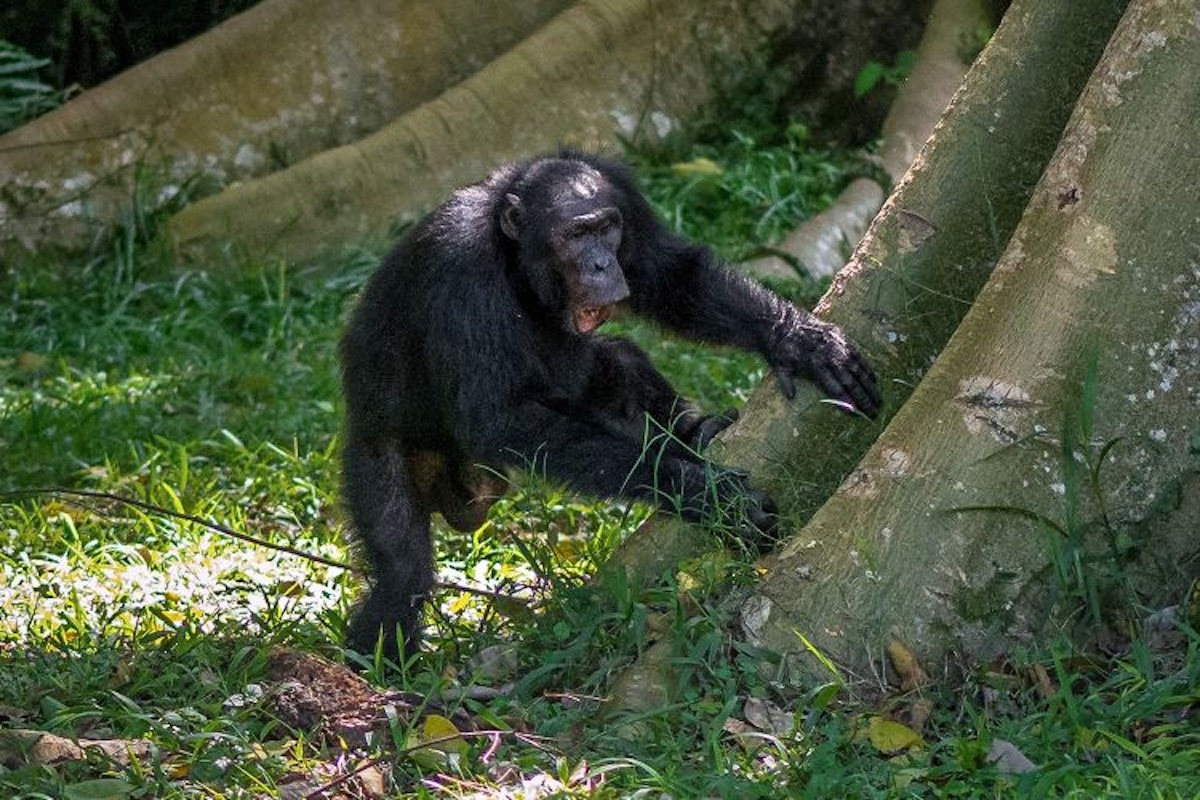Drumming Chimpanzees Have Unique ‘Signatures’

 Why you can trust us
Why you can trust us
Founded in 2005 as an Ohio-based environmental newspaper, EcoWatch is a digital platform dedicated to publishing quality, science-based content on environmental issues, causes, and solutions.
It turns out that humans aren’t the only animals who pound out beats to express themselves.
A new study published in Animal Behavior Tuesday found that male chimpanzees in Uganda’s Budongo Forest use “individual drumming ‘signatures’” when they drum on the buttress roots of trees, so much so that researchers could compare different chimps to famous human rockstars.
“Tristan — the John Bonham of the forest — makes very fast drums with many evenly separated beats,” study lead author and University of Vienna Ph.D. student Vesta Eleuteri told AFP, referring to the drummer with Led Zeppelin.
The researchers observed chimpanzees in the Waibira community as they drummed on the buttress roots of trees.
“If you hit the roots really hard, it resonates and makes this big deep, booming sound that travels through the forest,” study co-author Dr. Catherine Hobaiter of the University of St. Andrews told BBC Radio 4’s Inside Science programme, as BBC News reported.
The sound can travel for up to one kilometer (approximately 0.6 miles) and is accompanied by a vocalization unique to chimpanzees known as a “pant hoot,” the study authors explained. The chimpanzees typically drum with their feet, according to AFP, but do use their hands as well, turning the tree root into a full drum kit.
The team sought to learn more about these chimp drum circles by recording the stylings of seven male chimps and noting how long they paused between beats. Soon, the researchers discovered that the different chimps would make unique sounds. Some of them, like Tristan, sounded more like rock drummers while others favored a more syncopated, jazzy style.
“I was surprised that I was able to recognise who was drumming after just a few weeks in the forest,” Eleuteri told BBC News. “But their drumming rhythms are so distinctive that it’s easy to pick up on them.”
However, the chimpanzees didn’t use their signature styles every time they drummed. They tended to use them while traveling, but not during displays.
“Together these findings suggest that chimpanzees may be able to choose to encode identity within individual drumming ‘signatures,’” the study authors concluded.
Hobaiter explained why the chimpanzees might want to disguise their identity during displays.
“If you’re showing off to a group around you — if you’re displaying — you might not necessarily want the big alpha male who’s around the corner to know who you are,” she told BBC News. “You don’t want to give the game away.”
The study may help researchers answer other questions about chimpanzee behavior. One question is the question of why chimpanzees will greet each other to say hello, but make no comparable gesture of goodbye.
“The chimps might not need to say goodbye, because they’re effectively able to keep in touch while they’re away,” Hobaiter told BBC News. “These long distance signals give the chimps a way to check in with one another.”
Another question is whether chimpanzees — our closest genetic relatives — share our sense of music.
“I do think that chimpanzees, like us, potentially have a sense of rhythmicity, a sense of music, something that touches them on an almost emotional level, in the way that we might have a sense of awe when we hear an amazing drum solo or another kind of dramatic musical sound,” Hobaiter told AFP.
Subscribe to get exclusive updates in our daily newsletter!
By signing up, you agree to the Terms of Use and Privacy Policy & to receive electronic communications from EcoWatch Media Group, which may include marketing promotions, advertisements and sponsored content.

 233k
233k  41k
41k  Subscribe
Subscribe 




